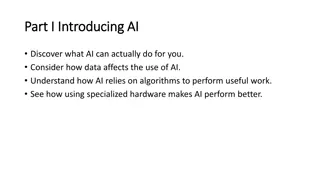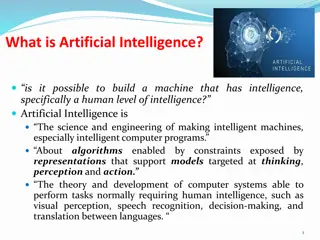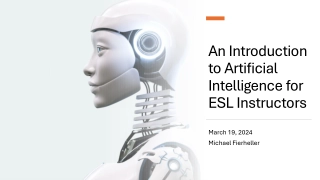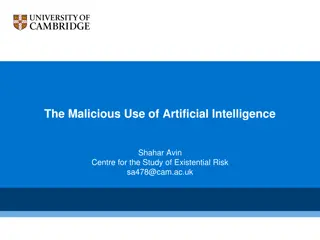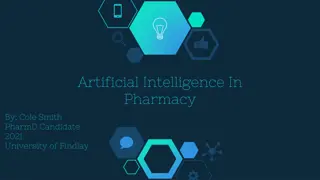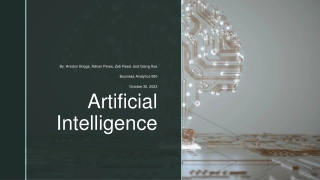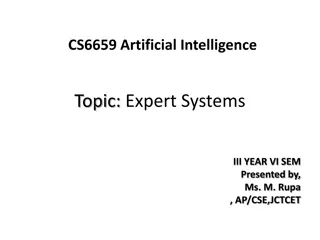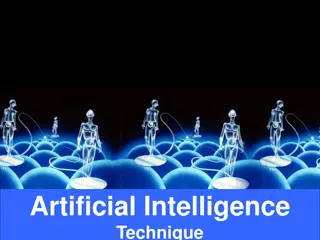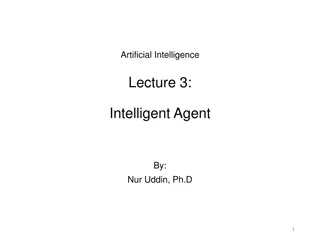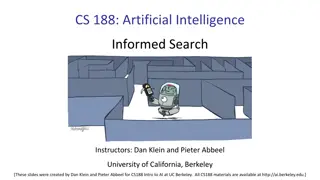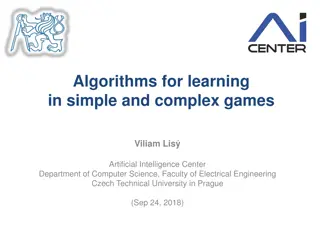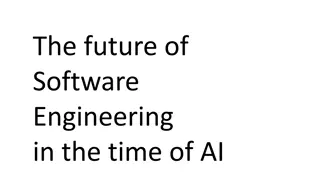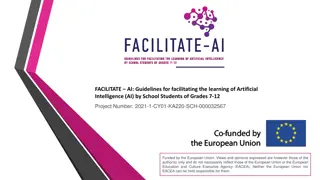Exploring Artificial Intelligence and Its Applications
Artificial Intelligence (AI) is the ability for computers to mimic human thought processes, learn, and perform complex tasks independently. Machine learning is a subset of AI that enables systems to recognize patterns and make decisions. Sophia the AI robot is a humanoid robot designed for research and education. AI can solve various problems like enhancing cybersecurity, healthcare, research, and transportation. Its advantages include applications in image recognition, recommendation systems, customer service, and medical diagnosis, ensuring data security and accuracy.
Download Presentation

Please find below an Image/Link to download the presentation.
The content on the website is provided AS IS for your information and personal use only. It may not be sold, licensed, or shared on other websites without obtaining consent from the author. Download presentation by click this link. If you encounter any issues during the download, it is possible that the publisher has removed the file from their server.
E N D
Presentation Transcript
CONTENTS 1 What is Artificial Intelligence? How is machine learning related? Examples of AI 2 3 4 What problems can AI solve? Disadvantages of AI How can we use AI responsibly? 5 6 Harshini
WHAT IS ai? Artificial Intelligence is the ability for a computer to think, learn and simulate human mental processes, such as perceiving, reasoning, and learning. It can also independently perform complex tasks that once required human input. Bhavika
how does machine Learning Relate to Ai? Machine learning implies to the technologies and algorithms that allow systems to recognize patterns, make decisions, and improve themselves through experience and data. Although the terms artificial intelligence (AI) and machine learning are frequently used interchangeably, (machine learning is a subset of the larger category of AI. ) Artificial intelligence signifies computers' general ability to mimic human thought while carrying out tasks in real-world environments Norah
SofiA THE AI ROBOT Sophia is a realistic humanoid robot capable of displaying humanlike expressions and interacting with people. It's designed for research, education, and entertainment, and helps promote public discussion about AI ethics and the future of robotics. Harshini
WHAT PROBLEMS CAN AI SOLVE? Cybersecurity dectecting spam Healthcare Research * medical records * idea generation, finding data Transportation self driving cars As shown above, AI can solve a LOT of problems. Let's explore a few on the next slide!
uses of Ai (adVANTAGES OF AI) Image and facial recognition Recommendatio n systems AI content recommendations help people stay engaged and informed. For example, Virtual(Siri and Alexa.), Personalized content on streaming platforms, Apps that suggest best routes based on traffic. Customer service Customer service teams can get feedback from customers by using AI. For example, AI- powered information can provide agents with information on client intent, language, and sentiment so they are aware of how to approach an encounter. Medical diagnosis Provides more exact diagnoses, detects hidden patterns in imaging investigations, and predicts how patients will respond to specific medications. This leads to better treatment strategies, fewer clinical errors, and more accurate diagnoss. It can help make data safer and more secure. For example, face authentication can ensure that only the appropriate person has access to sensitive information that is intended specifically for them. Bhavika
disadvantages of AI? Lack of Transparency lying about using AI Bias and Discrimination assumtion based of incorrect information Privacy Concerns Ethical Dilemmas Security Risks Concentration of Power Dependence on AI Job Displacement * Norah
how can we use ai responsibly? People should use their own creativity, not copy off of AI! AI is just a tool for efficiency! Consider data and Put People First privacy goals Minimize unintended bias Ensure AI transparency Harshini
Responsible AI USe AI can help do repetitive work for humans, but humans should still be prioritized. Create a culture that utilizes creativity, empathy, and dexterity from humans and AI for increased efficiency. Businesses should adopt strong security measures, limit access to sensitive data, and anonymize data whenever possible to secure data privacy with AI and ML technologies. There needs to be fairness in AI which entails identifying and eliminating discrimination while also encouraging diversity and inclusion. This is can be done by using training models with equal representation. Develop explainable AI that is visible across processes and functions to generate trust among employees and customers. Provide examinability, comprehension, and traceability.



